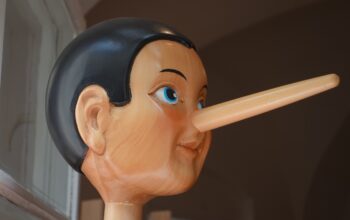By Desiree Cardenas Posted June 2, 2011
When I was six years old, I received my first Barbie doll. By the next year when I was seven, I owned 72 Barbie dolls. I had all the races, hair colors, outfits, and two Ken dolls. They all looked a little different except in the aspect that they all had the same shape. Every Barbie was built the exact same.
At that age I had no concept of body image, I actually didn’t even really play with the dolls. Dressing them up and leaving them in the bucket was the way I operated. I even went as far as to cut their hair, paint their nails, and put make-up on them. Now I’m 18 and have no dolls whatsoever in my house. With all the cases of depression and eating disorders in young girls, people want to point the blame on something, and they’re choosing Barbie.
In 1959 when Barbie first came onto the market there was no real pressure on women to feel the need to be as thin as possible. Women were still expected to be stay-at-home moms, cook, clean, and live for the family. The pressure wasn’t there to look beautiful to keep a job. Barbie could be modeled as unrealistically as possible because after all, she’s just a doll.
I think that’s the aspect that most people forget to realize. Barbie is just a doll. Eating disorders and depression weren’t really that common in the late ’50s. In this modern age, that seems to be a hot topic. Many modeling agencies will not even look at a girl if she doesn’t wear anything smaller than a two. Women are also expected to be tall, which brings in the case of high heels that moreover becomes very detrimental to the back and feet.
The media tells the general population that “thin is in” and Barbie has stayed thin. In Los Angeles, I saw a billboard with a woman wrapped in string with the caption, “You’re not beautiful unless you’re thin.” I was absolutely disgusted when I saw that. For one, the model was nothing more than a bag of bones, and two, everyone has a different view of beauty. Who is L.A. to tell women that they’re not this unless they look like that, or you have to be skinny for a guy to love you?
That might just be a California thing, but is Barbie really to blame? Perhaps people should look at the relationship between the girls and the parents. There was obviously a lack of communication from the parents to let the girls believe that they needed to look like a plastic doll to be amazing.
If there was that communication and reassurance that Barbie doesn’t mean perfection maybe girls wouldn’t be so hard on themselves. The real blame is Hollywood. Think about it, where do you see all these skinny women walking around in their size 0’s? Where do the magazines with the bikini models come from? My point is, Barbie is a doll, and Hollywood is judgmental. The blame needs to be taken away from the doll and pointed to the true cause.




